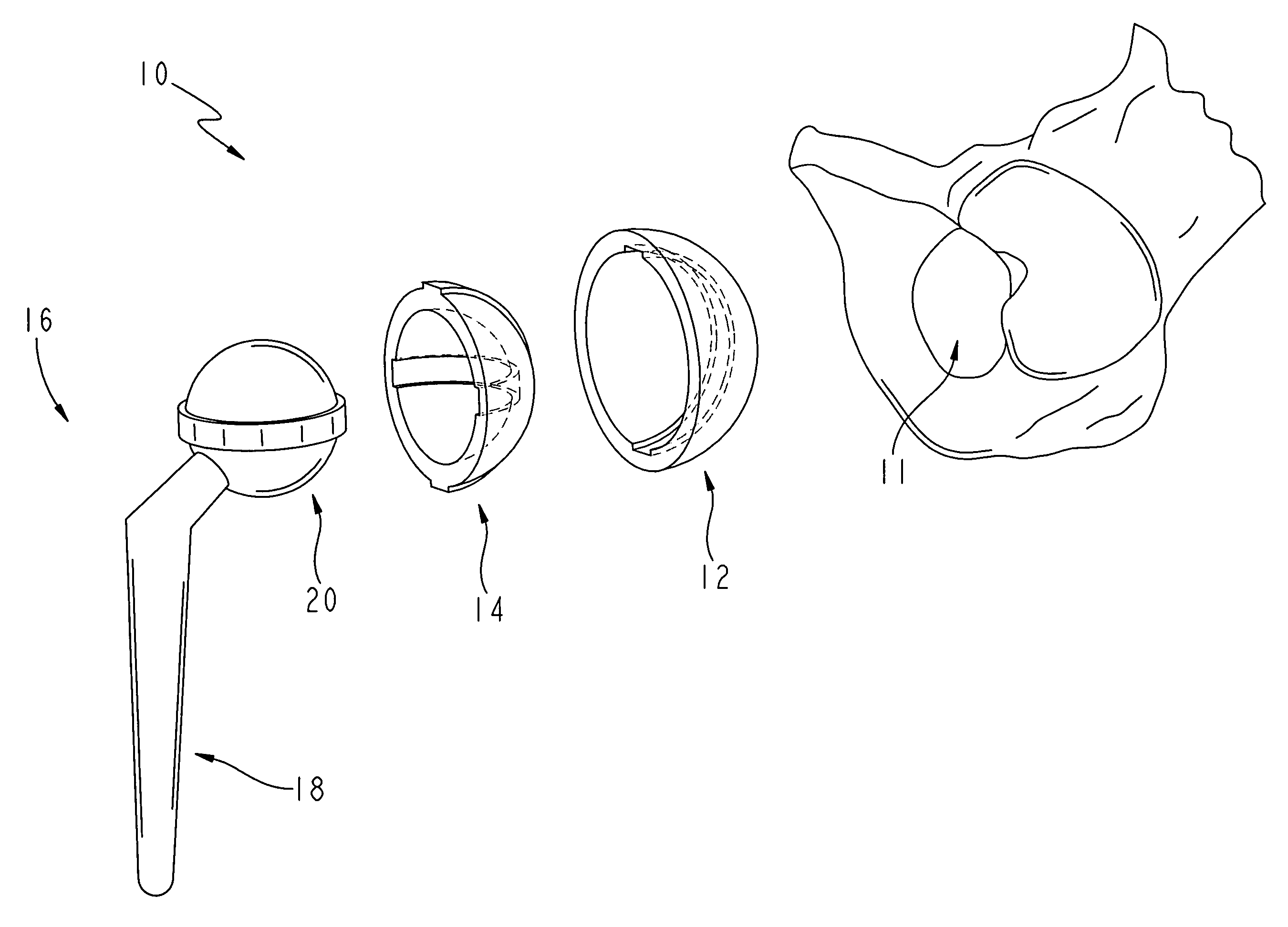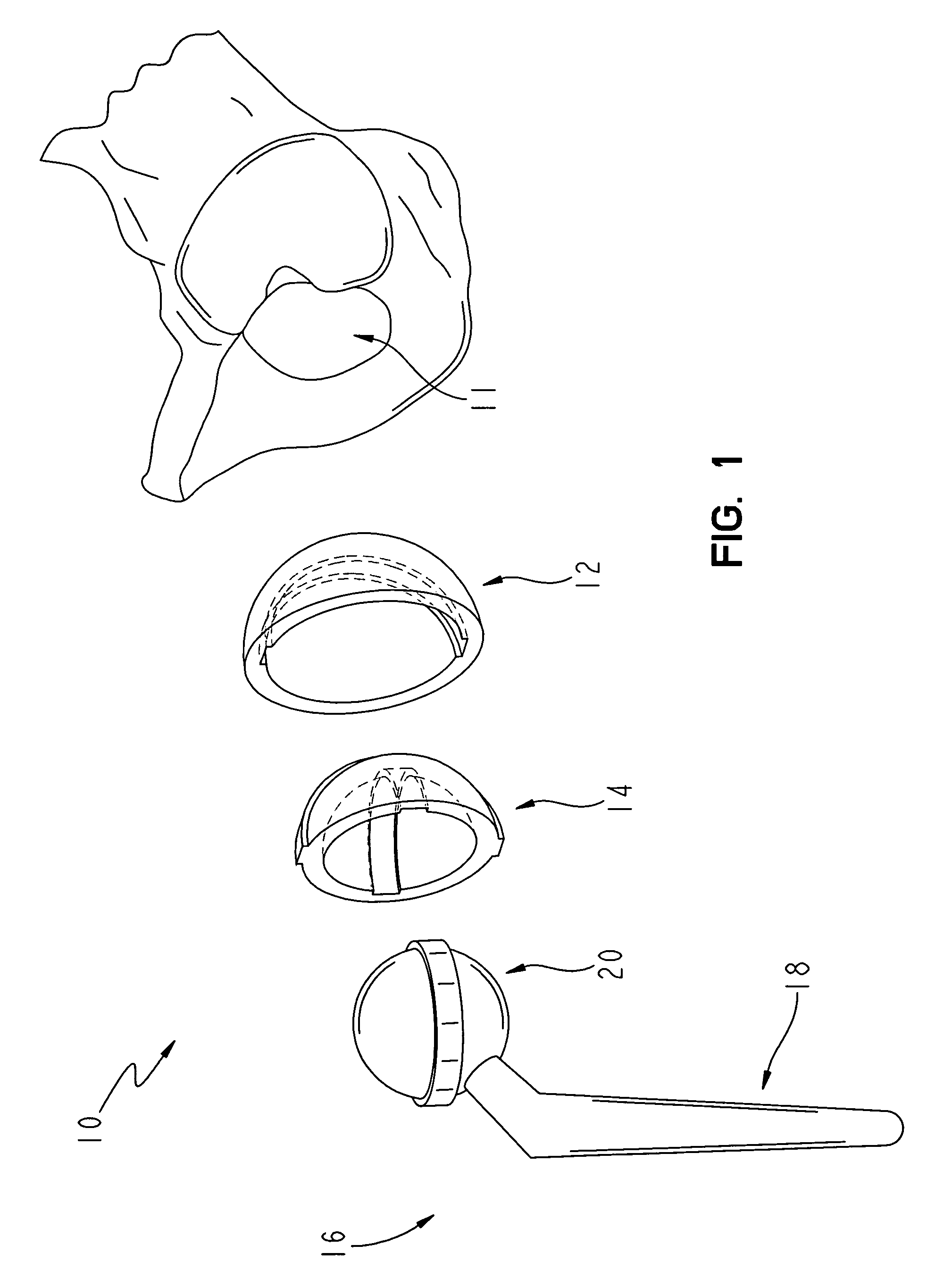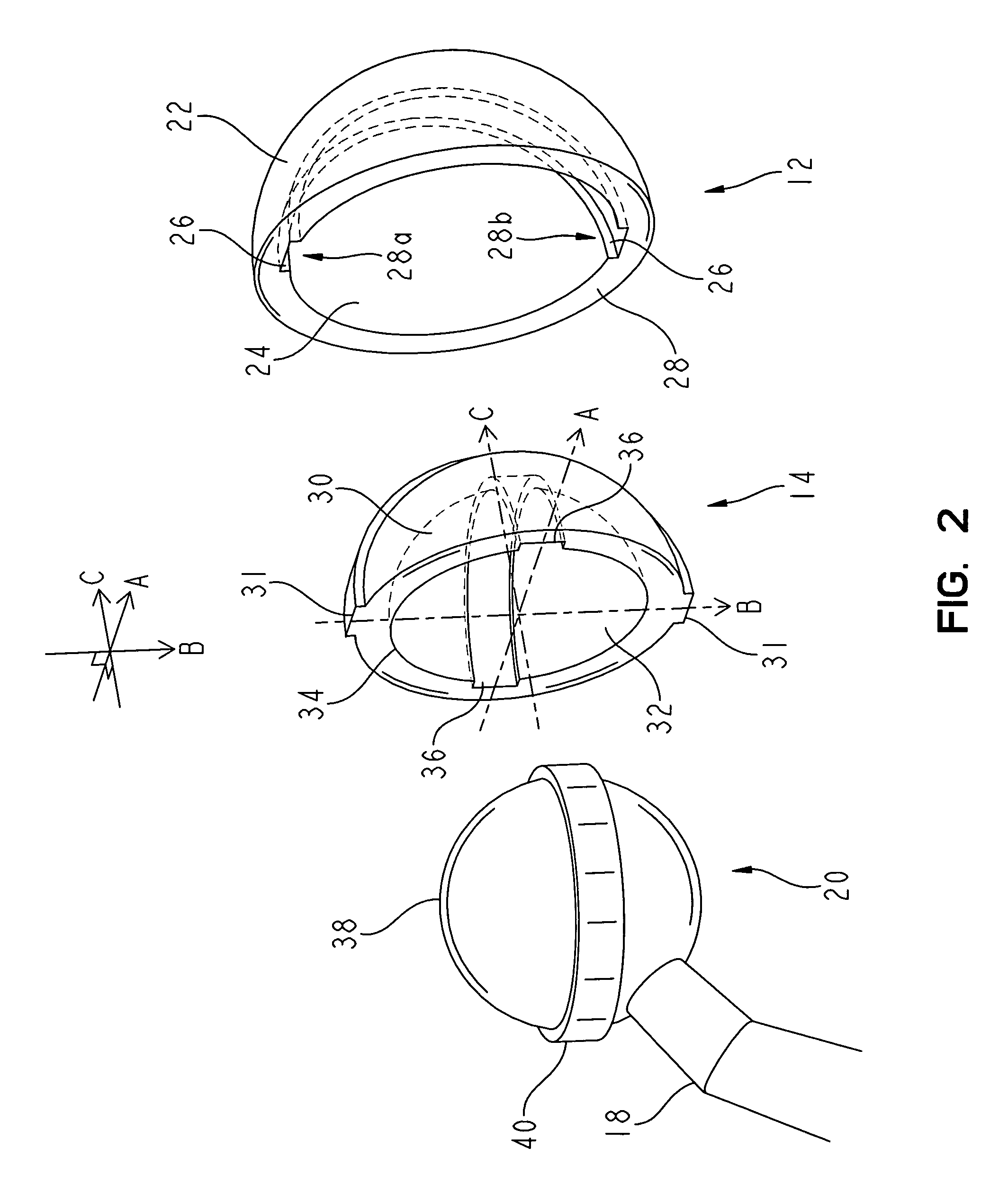Reduced wear orthopaedic implant apparatus and method
a technology of orthopaedic implants and implants, which is applied in the field of joint prosthetic implants, can solve the problems of releasing debris in and around the surrounding tissue, reducing wear, and reducing wear, so as to reduce wear and reduce cross-shear
- Summary
- Abstract
- Description
- Claims
- Application Information
AI Technical Summary
Benefits of technology
Problems solved by technology
Method used
Image
Examples
Embodiment Construction
[0025]FIG. 1 shows an exploded perspective view of an exemplary hip implant arrangement 10 according to the present invention as well as a fragmentary bone structure showing an acetabulum 11 of a human patient The hip arrangement includes an acetabular shell 12, a liner 14 and a femoral component 16. The acetabular shell 12 is generally configured to be received in the acetabulum 11 of a patient, and the liner 14 is configured to be received in the acetabular shell 12. The femoral component 16 includes a femoral stem 18 and a femoral head 20. The femoral stem 18 is configured to be received into or at least supported by the femoral bone tissue of the patient, not shown, and the femoral head 20 is configured to be received in the liner 14.
[0026]FIG. 2 shows a fragmentary, enlarged and exploded view of the implant arrangement 10 without the patient bone structure. As shown in both FIG. 1 and FIG. 2, the acetabular shell 12 includes an outer surface 22 having a generally rounded shape,...
PUM
 Login to View More
Login to View More Abstract
Description
Claims
Application Information
 Login to View More
Login to View More - R&D
- Intellectual Property
- Life Sciences
- Materials
- Tech Scout
- Unparalleled Data Quality
- Higher Quality Content
- 60% Fewer Hallucinations
Browse by: Latest US Patents, China's latest patents, Technical Efficacy Thesaurus, Application Domain, Technology Topic, Popular Technical Reports.
© 2025 PatSnap. All rights reserved.Legal|Privacy policy|Modern Slavery Act Transparency Statement|Sitemap|About US| Contact US: help@patsnap.com



